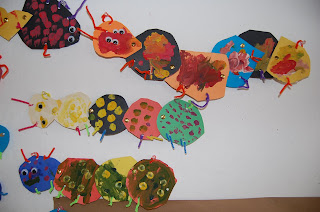I know that some parents have the desire that their child learns as fast as possible basics of a more realistic way of representing things in art and wonder why I don't teach how to draw shadows, representation and space and proportions to their 6 years old. They have to know that, for instance drawing shadows and learning the technic of shading off is a tough job (ask my adult students!) and perspective and representation of space are perceptions which demand a certain maturity and a lot of work to be understood and developed in art, in other words representation demands a lot of discipline and time.
Figurative art is more complex than a list of tips and recipes.
I don't want to put my youngest students off doing art or learning drawing and painting by imposing them too big visual and technical efforts, when it is obviously too early for them.
That is why I gradually include some more complex exercises (drawing geometric shapes, drawing light and dark, collages with elements that are close to us (big) and far from us (small) in order to develop the perception of space).
When they reach the age of 7 (the "magic" age when children start to have the desire to draw more representational things) and when I feel that a child is ready for more instructions, I put them in front of a still life with an easel and a palette or in front of a wood mannequin with a pencil and a sketch book.
And then they start to analyze what they see, and draw what they see, with instructions about proportions, spaces, shadows, colors... a new and exciting adventure!


























